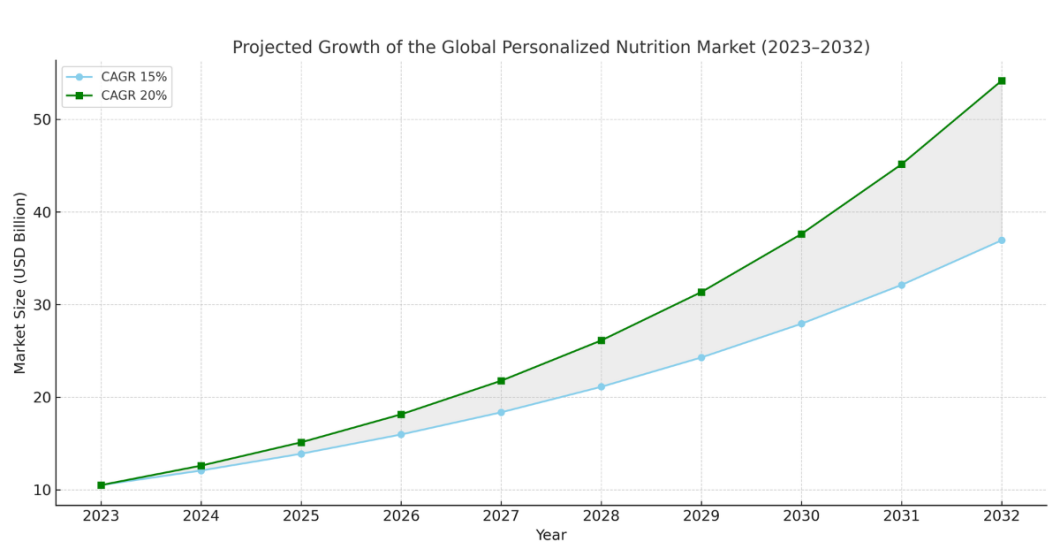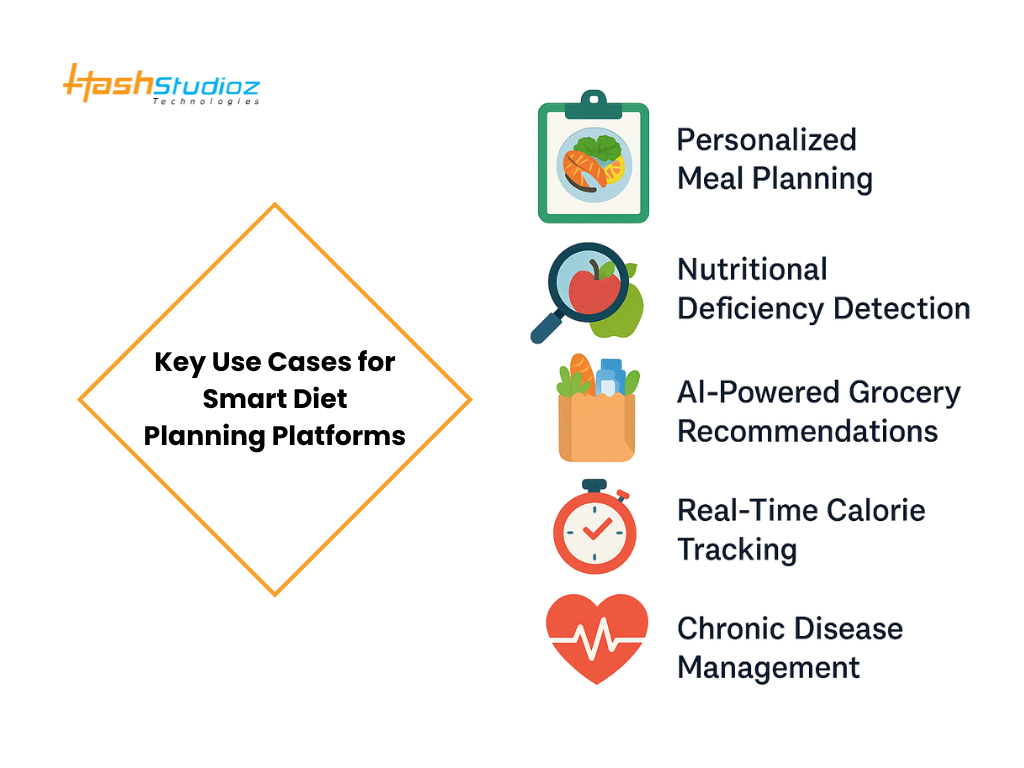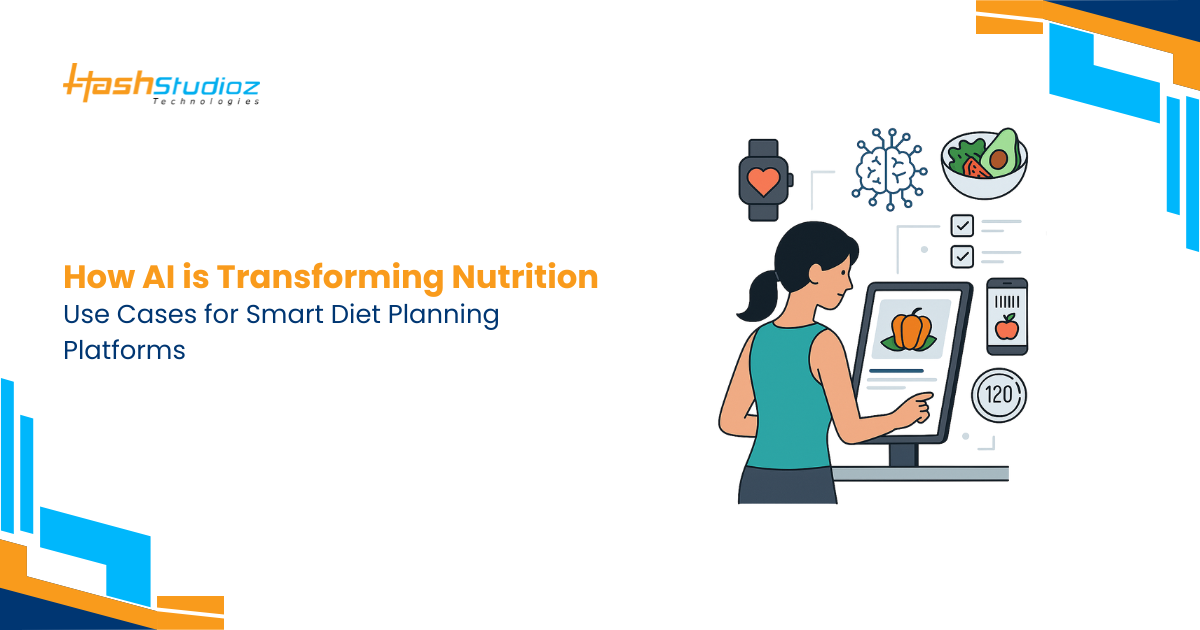In today’s tech-driven healthcare ecosystem, nutrition is undergoing a profound digital transformation. Traditional dietary planning, which once relied on generic food charts and manually recorded logs, has evolved into an intelligent, data-informed process powered by artificial intelligence (AI). The rise of AI in Smart Nutrition enables platforms to deliver hyper-personalized dietary insights, going far beyond one-size-fits-all advice. Whether it’s achieving weight loss goals, managing diabetes, or optimizing athletic performance, AI empowers users to make data-driven decisions about what they eat, when they eat, and how it impacts their health.
Smart diet planning platforms are at the forefront of this revolution. By integrating AI with behavioral science, biometrics, and machine learning, these platforms are creating personalized dietary ecosystems that can adapt in real time. The result? Nutrition becomes not just a lifestyle choice but a dynamic, responsive tool for wellness and disease prevention.
According to Nutrients MDPI research reports:
- The Global Personalized Nutrition Market, which includes AI-based diet and nutrition platforms, was valued at approximately USD 10.5 billion in 2023.
- It is projected to grow at a CAGR of 15% to 20% from 2024 to 2032.
- By 2032, the market is expected to reach USD 45 to 65 billion, depending on the research source and scope of inclusion (wearables, DNA testing, AI apps, etc.).

Table of Contents
- The Rise of AI in Nutrition
- Core Elements to Build the Best AI-Based Nutrition App
- 1. User Profiling & Health Data Collection
- 2. AI-Powered Recommendation Engine
- 3. Food Recognition & Nutrient Analysis
- 4. Wearable & IoT Integration
- 5. Conversational AI Assistant
- 6. Nutrition Database Integration
- 7. Goal Tracking & Visual Analytics
- 8. Security, Privacy & Compliance
- 9. Behavioral Science Integration (Optional but Powerful)
- Key Use Cases for Smart Diet Planning Platforms
- Benefits of AI-Driven Nutrition Platforms
- Challenges and Ethical Considerations
- Future Trends in AI-Powered Nutrition
- Conclusion
- FAQs
The Rise of AI in Nutrition
AI’s integration into nutrition isn’t just a trend—it’s a paradigm shift. The food and nutrition industry has always relied on quantitative measures—calories, macros, vitamins, glycemic index. However, processing this data for millions of individuals, each with unique genetics, preferences, and health goals, is a colossal task.
Enter AI. By processing massive datasets in milliseconds, AI models can draw conclusions and generate recommendations far beyond human capacity. These systems learn continuously—from user habits, biological data, and environmental factors—to produce hyper-personalized nutrition plans.
The shift to AI-enabled nutrition is also supported by several global trends:
- Rising demand for preventive healthcare
- Increased use of wearable health devices
- More affordable access to personal health data
- Consumer preference for convenience and customization
Core Elements to Build the Best AI-Based Nutrition App
Creating a truly intelligent and personalized nutrition app goes far beyond tracking calories. It requires a blend of AI, data science, real-time health monitoring, and user-focused design. Below are the essential elements that form the foundation of a top-tier AI-powered nutrition platform:
1. User Profiling & Health Data Collection
A strong foundation starts with deep personalization.
Key Features:
- Collect biometric data: age, gender, height, weight, BMI
- Lifestyle & activity level
- Dietary preferences (vegan, keto, gluten-free)
- Medical history: diabetes, hypertension, allergies
- Health goals: weight loss, muscle gain, disease management
Tip: Use dynamic forms and conditional logic to streamline the onboarding experience.
2. AI-Powered Recommendation Engine
The core of the app is its machine learning model that processes user data and suggests personalized meals, nutrition goals, and habits.
What It Should Do:
- Predict daily calorie & nutrient requirements
- Generate meal plans based on individual needs
- Learn user preferences over time (reinforcement learning)
- Adjust recommendations dynamically based on progress
Tech Stack: TensorFlow / PyTorch, Scikit-learn, XGBoost, Python
3. Food Recognition & Nutrient Analysis
Let users snap a photo of their meal and instantly get nutrition facts.
Capabilities:
- Image-based food detection using computer vision
- Calorie & macronutrient estimation
- Barcode/label scanner for packaged items
Tech: YOLOv5, Food-101 Dataset, TensorFlow Lite, OpenCV
4. Wearable & IoT Integration
Smart nutrition apps integrate with wearables to offer real-time adaptive feedback.
Common Integrations:
- Apple HealthKit, Google Fit, Fitbit API
- Glucose monitors (for diabetic users)
- Smart kitchen scales & fridges (IoT)
What It Enables:
- Real-time activity & calorie burn tracking
- Sleep & heart rate monitoring to inform dietary suggestions
- Smart fasting & hydration reminders
5. Conversational AI Assistant
A built-in chatbot or voice assistant improves engagement and accessibility.
Functions: Answer user questions: “What can I eat for lunch?”
- Daily nutrition tips and reminders
- Meal logging through natural language input
- Goal coaching and progress motivation
Tech: OpenAI GPT-4, Rasa, Dialogflow, LangChain
6. Nutrition Database Integration
Accurate recommendations need a comprehensive food and nutrient dataset.
Suggested APIs:
- USDA FoodData Central (free)
- Nutritionix
- Edamam
- Custom curated nutrition libraries (regional foods, Ayurveda, etc.)
7. Goal Tracking & Visual Analytics
Help users visualize their journey and progress toward their goals.
Key Components:
- Daily/weekly calorie intake & burn charts
- Nutrient breakdown (protein, fiber, carbs, etc.)
- Progress toward fitness/health goals
- Dynamic recommendations based on trends
Tools: Recharts, Chart.js, D3.js
8. Security, Privacy & Compliance
Handling health data requires serious attention to security and privacy.
Must-Haves:
- HIPAA & GDPR compliance
- Secure data encryption (in transit and at rest)
- OAuth 2.0 authentication & role-based access
- User consent management
9. Behavioral Science Integration (Optional but Powerful)
Use AI to model behavior and increase adherence through smart nudges.
How It Helps:
- Recommend minor habit changes based on past patterns
- Offer motivational messages and positive reinforcement
- Use behavioral segmentation to personalize content
Key Use Cases for Smart Diet Planning Platforms

A. Personalized Meal Planning
One of the most compelling applications of artificial intelligence in nutrition is the creation of custom meal plans based on individual needs and preferences.
AI algorithms evaluate:
- Body metrics: BMI, body fat percentage, BMR
- Fitness goals: weight loss, muscle gain, endurance improvement
- Medical history: allergies, intolerances, chronic conditions
- Lifestyle: activity levels, work schedule, sleep patterns
- Dietary preferences: vegan, keto, low-FODMAP, Mediterranean, paleo
With this data, AI platforms can generate meal plans that are nutritionally balanced and aligned with real-world routines. The system can even adjust recommendations if a user skips a workout or logs a high-calorie meal.
Example: A user trying to lose weight might receive a high-fiber, low-GI meal plan with suggested snack alternatives based on cravings logged in the past.
B. Nutritional Deficiency Detection
Many people are unaware that they suffer from micronutrient deficiencies—until symptoms become severe. AI can detect these imbalances early by:
- Analyzing food diaries for missing nutrients
- Correlating fatigue, mood, skin issues, and immunity with nutrient intake
- Integrating data from at-home blood tests, microbiome kits, or DNA tests
Once a deficiency is detected, the platform recommends food-based solutions first, followed by appropriate supplementation. This personalized approach is more sustainable and effective than standard multivitamin usage.
Example: If a vegan user shows signs of B12 deficiency, the app may recommend fortified cereals, nutritional yeast, or consult a doctor for supplementation.
C. AI-Powered Grocery Recommendations
Shopping for healthy food can be overwhelming. AI simplifies this by:
- Creating automated shopping lists based on the weekly meal plan
- Suggesting healthier substitutes for high-sugar, processed items
- Recommending seasonal and cost-effective alternatives
- Alerting users to potential allergens or intolerances
Many platforms integrate with e-commerce grocery stores, offering one-click ordering for entire meal plans. They also factor in local availability and pricing, creating a seamless bridge between meal planning and food sourcing.
Example: A platform might recommend sweet potatoes instead of white rice due to higher fiber and vitamin A content—and add it directly to your online cart.
D. Real-Time Calorie Tracking
Calorie tracking is notoriously tedious, but AI simplifies this through automation:
- Image Recognition: AI identifies foods and portion sizes from a photo and estimates calories and macros.
- Natural Language Processing (NLP): Users can describe meals via voice or text (“Had a bowl of chicken ramen”), and the AI converts it into nutritional data.
- Barcode Scanning: AI fetches nutrition labels instantly and logs the item.
This automation reduces manual input fatigue, ensuring better compliance and accuracy in tracking.
Example: A user uploads a photo of their dinner. The app identifies grilled salmon, quinoa, and steamed broccoli and logs it with accurate nutrition info in under 10 seconds.
E. Chronic Disease Management
AI has immense potential in clinical nutrition, especially in managing lifestyle diseases:
- Diabetes: Recommends low-glycemic meals, alerts on high-carb intakes, syncs with CGMs
- Hypertension: Suggests low-sodium, high-potassium options
- PCOS: Adjusts macronutrient ratios for insulin sensitivity
- Cholesterol management: Promotes fiber-rich and low-saturated-fat meals
These platforms act like 24/7 dietitians, providing real-time guidance based on biometrics and meal history. Some even offer virtual coaching or connect users with licensed professionals.
Example: An AI platform notices a spike in a diabetic user’s glucose after lunch and suggests adjusting the portion size of rice or replacing it with cauliflower rice next time.
F. Integration with Wearables
Smart nutrition platforms increasingly sync with fitness trackers, sleep monitors, and biosensors to offer a holistic wellness experience:
- Adjust caloric targets based on daily steps, heart rate, and workouts
- Suggest post-workout meals based on energy expenditure
- Time meals around circadian rhythms and sleep patterns
- Recommend hydration levels based on sweat loss or ambient temperature
This level of synchronization ensures that diet and activity are always aligned, maximizing energy, performance, and recovery.
Example: If a user has a poor night’s sleep, the app recommends a magnesium-rich breakfast (like oats with banana and almonds) to improve mood and energy.
Benefits of AI-Driven Nutrition Platforms
- Precision and Personalization: AI tailors diets based on deep personal data—not generalized charts. This leads to more sustainable results and better adherence.
- Time Efficiency: From auto-generated meal plans to smart shopping lists, users save significant time on meal prep and decision-making.
- Preventive Healthcare: By monitoring trends and flagging risks early, AI nutrition tools prevent diseases before they develop, reducing future medical costs.
- Enhanced Engagement: Gamified features, real-time feedback, and progress tracking motivate users to stay on track.
- Evidence-Based Insights: Many platforms incorporate the latest nutritional science and update their algorithms based on new research and user outcomes.
Challenges and Ethical Considerations
While promising, AI in nutrition is not without challenges:
- Data Privacy Risks: Nutrition data is personal. Platforms must encrypt sensitive information and comply with HIPAA, GDPR, and other regulations.
- Algorithm Bias: If trained on non-diverse datasets, AI may give skewed results—ignoring ethnic diets, local ingredients, or unique genetic profiles.
- Mental Health Implications: Obsessive tracking or AI-generated guilt around food can negatively affect mental well-being. Emotional context still requires human oversight.
- Over-Reliance on AI: Users may begin to outsource all decisions to AI, losing intuition and self-awareness around eating.
Future Trends in AI-Powered Nutrition
- DNA-Based Diets: AI will increasingly integrate with genomics to create diets that match an individual’s metabolic and enzymatic tendencies.
- Smart Kitchens: Imagine a fridge that alerts you about nutrient shortages or an oven that automatically cooks meals based on your macro targets.
- Voice-Powered Nutrition Assistants: Voice bots like Alexa and Siri will evolve into nutrition coaches, responding to food questions and managing meal schedules.

Conclusion
AI has redefined what’s possible in nutrition science. With personalized recommendations, predictive insights, and seamless integration into daily life, smart diet planning platforms are making health more accessible, personalized, and proactive. This isn’t just a tech upgrade—it’s a transformational leap toward data-driven wellness.
As AI continues to mature, it will not only guide what we eat—but also how we live, recover, and thrive.
FAQs
Q1. Can AI nutrition platforms replace dietitians?
Not completely. While AI provides scalable and personalized suggestions, human dietitians offer empathy, cultural context, and nuanced understanding that AI cannot replicate.
Q2. What devices do AI diet platforms connect with?
Most modern apps sync with:
- Fitbit
- Apple Health
- Garmin
- Oura Ring
- CGMs like Dexcom or FreeStyle Libre
Q3. How often are AI diet plans updated?
Many platforms update meal plans daily or weekly, adjusting based on activity, weight changes, or logged food entries.
Q4. Can AI adapt to cultural and regional diets?
Advanced platforms do account for local cuisines, but accuracy improves when users input preferences and regional foods manually.
Q5. What is the best AI-based nutrition app in 2025?
Some popular ones include:
- Cronometer
- MyFitnessPal
- Noom
- Lumen
- Nutrigenomix (for DNA-based plans)

